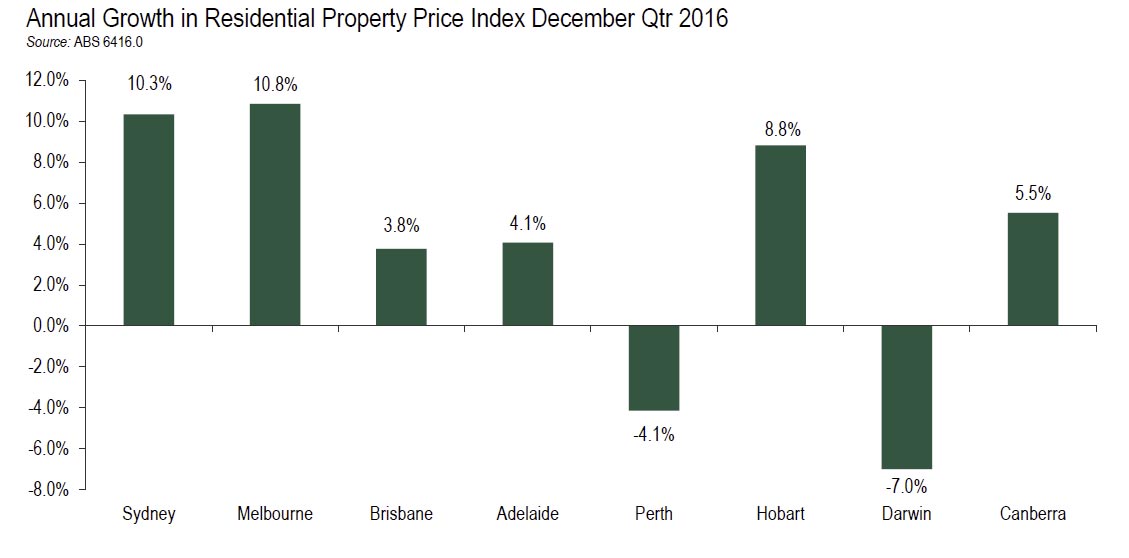From The HIA.
ABS data released today confirms acceleration in the rate of growth in residential property prices in late 2016, said the Housing Industry Association.
In the year to the December 2016 quarter, dwelling price growth remained fastest in Melbourne (+10.8 per cent), followed by Sydney (+10.3 per cent). Dwelling prices also grew over the year to the December 2016 quarter in: Tasmania (+8.8 per cent); the Australian Capital Territory (+5.5 per cent); and Queensland (+3.8 per cent). Dwelling prices continued to decline in Western Australia (-4.1 per cent) and the Northern Territory (-7.0 per cent).
“This result for the December 2016 quarter shouldn’t surprise anybody. Nor should the large divergence in growth rates between Australia’s eight capital cities,” said HIA Chief Economist, Dr Harley Dale.
“The growth rate for attached dwelling prices is far slower than for existing houses, while Sydney and Melbourne price growth is way of ahead of other markets,” noted Harley Dale. “Sydney and Melbourne represent 40 percent of Australia’s population and some concern regarding the trajectory of house price growth in these two markets is warranted. Elsewhere, people still scratch their heads when it comes to a supposed housing price ‘boom’ because that simply hasn’t been their experience this cycle, even allowing for some recovery in prices in recent times.
“On the same day as we have received an update on dwelling prices there has also been speculation regarding some tension between members of Australia’s Council of Regulators, plus an (appropriate) questioning of banks’ out of cycle interest rate hikes.”
“People can make of that what they will, but let’s not lose sight of the main goal. Yes, there is some need to tighten lending conditions for some Australian housing markets in terms of geographical areas and dwelling types,” concluded Harley Dale. “However, a blanket tightening of lending conditions – as now seems to be emerging again – is the wrong policy and risks damaging Australia’s financial stability. That is the very opposite to the ideal outcome authorities want to achieve.”

